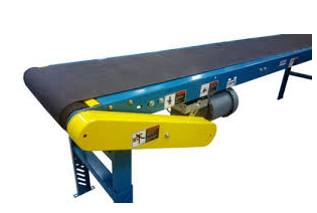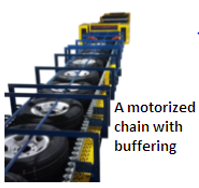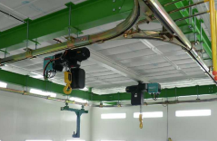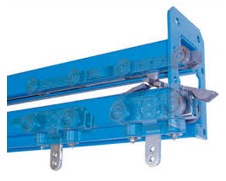What Are Conveyor Types And Their Uses?
Conveyors are mechanical assemblies that help in transporting materials with minimal effort. Though there are many types of conveyor systems, they mainly feature common components such as frames that support wheels, rollers or belts for moving materials under consideration. This article takes a deeper look at the conveyors to establish the different types and associated benefits.
What are the Benefits of Conveyors?
When engineers plan for different production systems, here are some of the reasons for including conveyors:
- Moving products/ materials/ items from point X to point Y.
- Carrying products that would otherwise be too heavy to lift manually.
- To move products when operations are running.
- Presenting products to processing machines or receiving products from production.
- Creating an accumulation bank.
- Prevent injuries to workers.
- Sequence products between processes.
When conveyors are installed and used correctly, they can greatly improve efficiency, safety, and productivity. Here is a summary of the main types of conveyors.

Belt Conveyor
These conveyors are also referred to as conveyor belts. They operate by moving materials and parts from one section to another. Their speed varies depending on the drive. They are also considered part of floor conveyors.
Belt drives cannot be used to present parts/ materials to a robot, as a working surface, or buffering sequence parts. However, they are very common because of their simplicity.
Chain Conveyors

These conveyors are mounted on the floor and are considered ideal for moving heavy items especially when the surface is uneven. The chains contain two to three contact points that move the load as the chain moves forward.
Many chain conveyors carry large industrial containers such as pallets. If the products are mounted on a skid or fixture, they can also be moved along the chains. A good example of this form of conveyor is the auto manufacturing plants where chains are used to move parts at low speed for assembly.
Live Roller Conveyors

When the chain conveyors and gravity conveyors are combined and a gearbox used to drive them, the product is referred to as a roller conveyor. This conveyor is also referred to as CDLR. It is a heavy-duty conveyor that can be used to transport heavy materials such as pallets, tires, and containers.
If the CDLR is fitted with sleeves over the rollers, it is possible to buffer products as the rollers move on.
See the image of a guarded conveyor in the image.
Motorized Roller Conveyors
 If you place a motor in a conveyor roller, you get a motorized roller. These are modern designs that are used in sophisticated distribution centers. The rollers move at high speeds of up to 200 feet/ minute and are common in Amazon and mail packaging.
If you place a motor in a conveyor roller, you get a motorized roller. These are modern designs that are used in sophisticated distribution centers. The rollers move at high speeds of up to 200 feet/ minute and are common in Amazon and mail packaging.
Only one or several rollers are motorized and then connected to others in the same zone with belts. Automated systems are used to turn the motors on/off for effective operations. See the image that shows the architecture of a motorized conveyor.
 Slat Conveyors
Slat Conveyors
These conveyors are 2-stand chain conveyor models but featuring slats that connect to a guiding system for the multiple slats. This helps to offer a smooth surface that can be used for fixtures or tooling details to hold parts in the targeted positions. In some cases, you can use the slat conveyors up to 180 degrees. This makes the slat conveyors good options for assembly operations. They are, therefore, very common in robotics to perform loading or unloading tasks.
 Overhead Hand Push Beam Trolley System
Overhead Hand Push Beam Trolley System
In the overhead conveyor types, the common systems are the hand pushed beam trolleys. These conveyors use enclosed tracks as track. They are also very flexible, very easy to set up and cheap. You can mount them in a house with roof support or floor supported structures. The conveyors are common with painting operations.
 Motorized Overhead Conveyors
Motorized Overhead Conveyors
When the overhead conveyors are connected to motorized systems such as chains, they are used to move larger volumes of materials. The connecting chains can be enclosed or open just below the I-beams. Then, the chain is driven by a gearbox to increase the movement volume. See the image below showing the motorized overhead conveyors.
 Power and Free Conveyors
Power and Free Conveyors
These are regular motorized overhead conveyors but differ slightly because they feature two tracks. In one track is a chain that runs continuously while the other features a trolley that moves along with pusher dogs (pushing mechanisms). They are preferred because they can easily start, stop and re-sequence using switches.
See the image.
The Final Take
When you decide to install a conveyor for your system, it is important to understand the nature of the load and the expected mechanics for optimizing operations. The above guide provides insights that you can use to pick the best conveyor for your system.
